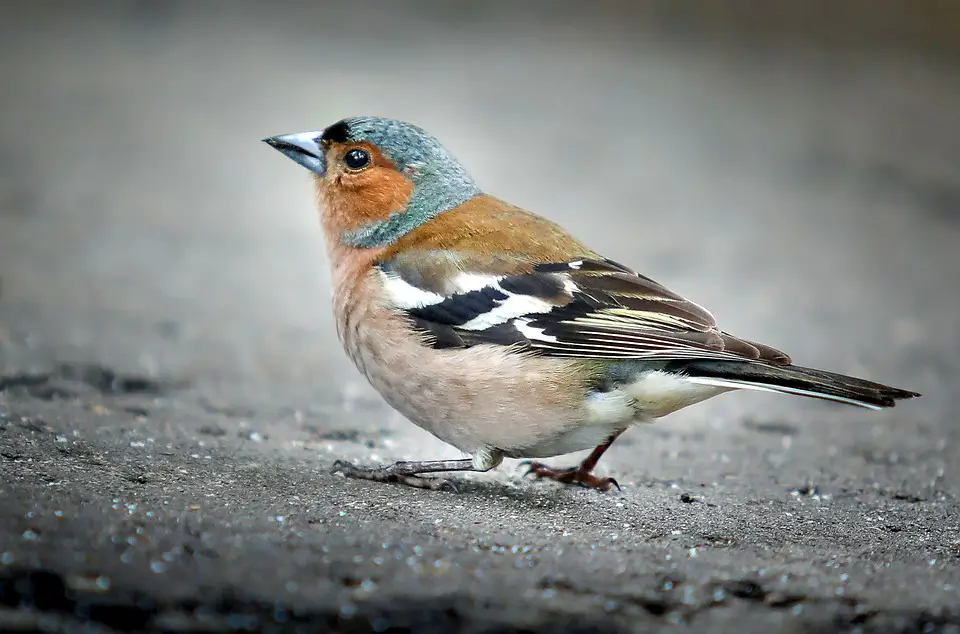Like me, you must watch the birds at your feeding tables and notice some species are much more prolific visitors than others are.
I’m sure that none of us would be surprised to know that sparrows, starlings and wood pigeons all top the bird census’ year upon year, but have you ever thought that you seem to see some garden birds less with each passing year?
I definitely feel that the common chaffinch, (Fringilla coelebs), fits into this category.

Let’s investigate,
Sadly, it is not just the chaffinch that is in decline, it is most birds.
However, it is a very slow and gradual process and not a sudden occurrence.
There is a steady decrease in the chaffinch’s population due to natural events, most notably the weather, disease and climate change. However, some counts show increase too, these fluctuations occur due to similar reasons, suitable weather and a disease free season, even counts taking place when migrant birds are in town!
There are 6.2 million chaffinches in the U.K. alone and a further 2million in Ireland, so the species certainly isn’t under any threat, it is just worth keeping a watch over.
The chaffinch’s conservation status is that of least concern.
The Big Garden Birdwatch 2019, found that garden birds are in abundance so far this year but that there is a distinct lack of finches, including the chaffinch. Even so, they still featured 9th in the list with some 350,000 being spotted. The survey took place over the weekend of January 26th to 28th and around half a million people completed it.
The 2018 results a staggering 8 million birds were counted in the similar 3 day period. Amazing!
There are several reasons why the chaffinch in particular has been in decline; often it is a manmade problem which affects the bird’s food source and habitat.
Table of Contents
Changes in agriculture
- To increase planting space, the farmer will plough a larger area, this will disturb the chaffinches in the surrounding hedgerows, their chosen nesting place.
- Changes to cropping practices, cereal sown in autumn and not spring. This is alien to what is normal for the chaffinch and causes them confusion.
- Advances in farming mean land no longer needs to lie fallow to recover. As soon as a crop is harvested, the new seed is planted. The chaffinch would prefer to pick through threshed crops hunting for discarded grains, sometimes for weeks on end.
- Farms are now either arable or livestock, rarely both, resulting in a loss of diverse habitats upon which the chaffinch depends, for survival.
- More efficient animal food storage, the birds can’t access the cattle grain store anymore!
- Chemicals and pesticides. These are still harming our wildlife.
Disease
Sadly, the chaffinch is susceptible to two diseases. Fringilla papillomavirus, this isn’t particularly harmful to the birds but it does leave them with uncomfortable and unsightly growths on their feet and legs. We should clean feeding stations regularly to avoid this.
The second disease is far more dangerous, trichomonosis, and can be fatal to the chaffinch. It affects the bird’s digestive system and spreads quickly as birds feed one another regurgitated food during breeding season.
In 2006 and there was an epidemic that caused a decline of 21% of the birds.
Although their numbers began to increase over the years, in 2013 there was a second, smaller outbreak, which once again, affected the chaffinch population.
Climate change
Dwindling chaffinch population, in fact the numbers of all garden birds, will be affected by the change in our climate.
Did you know that the average British temperature has increased by almost 1 and that 8 out of 10 of the warmest years on record have occurred since 1990?!
This causes phenological mismatch, the study of regularly recurring biological phenomena such as animal migrations or plant budding, especially as influenced by climatic conditions.
In layman’s terms, things are happening at the wrong time of the year.
Species that usually rely on each other in the food chain are changing the timing of phases within their life cycles. This means that plants are budding early and the invertebrates upon which woodland passerines, including chaffinches, rely are forming part of the ecosystem at a different time of the year.
This is a very slow and gradual process but it is happening nonetheless; chaffinches and other insectivorous birds have become reliant on seasonal abundance of insects and buds and things are changing.
Overall, it appears that although the chaffinch population is in decline, it is happening at an incredibly slow rate.
The amount of chaffinches in not a cause for concern just yet, though we shouldn’t allow the decrease to continue.
It was man that created most of the problems so shouldn’t it be us that fixes them? We should keep a clean, well-stocked feeding table to encourage him into our gardens. Sunflower hearts, niger seeds, suet blocks and meal worms should do the trick!
Consider planting honeysuckle, not only does it look and smell beautiful but the chaffinch will roost between its leaves, eat its berries and dine on the bugs it finds within its branches.
Bird boxes high in the trees will attract him; maybe your garden will be where he starts his family?
Whatever your plan of action is, I am sure that you will be well rewarded in helping maintain the species, the song of the chaffinch is one of the prettiest birdsong there is, particularly when the clever little fella mimics your regional accent!
